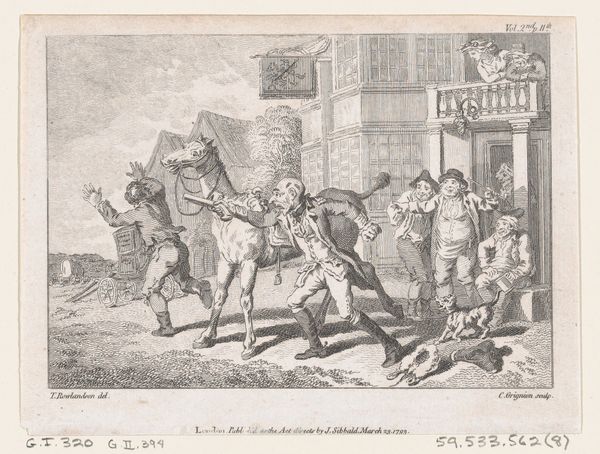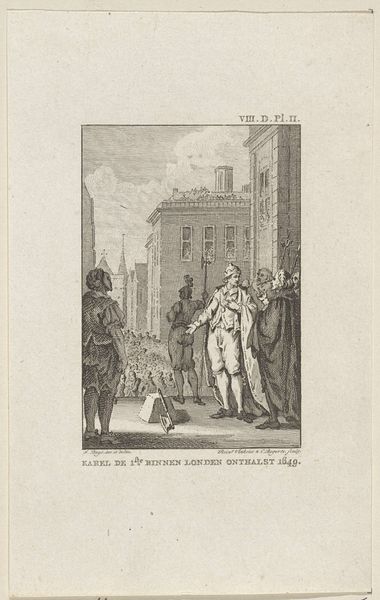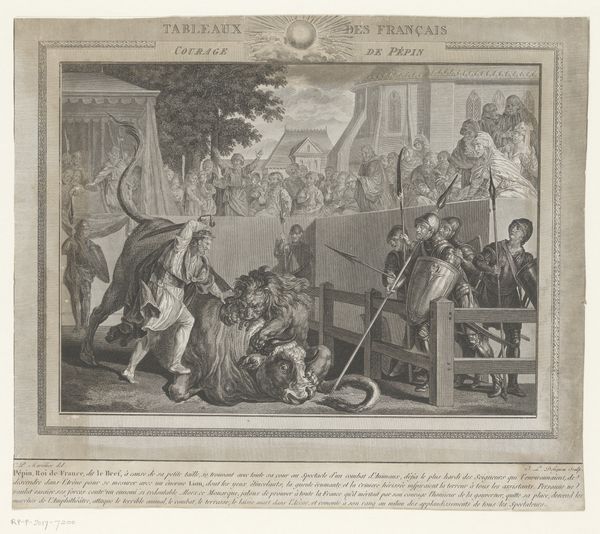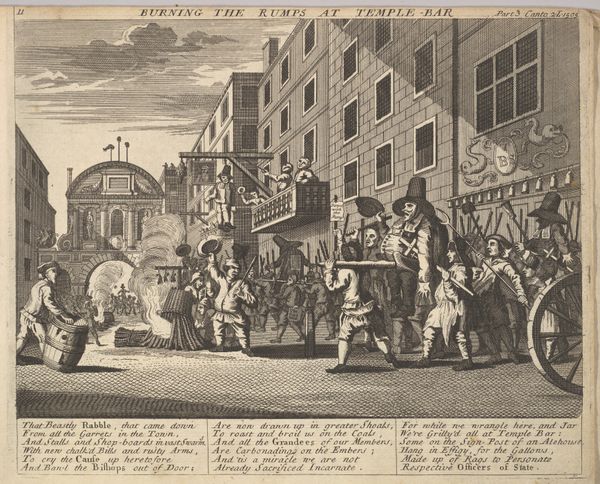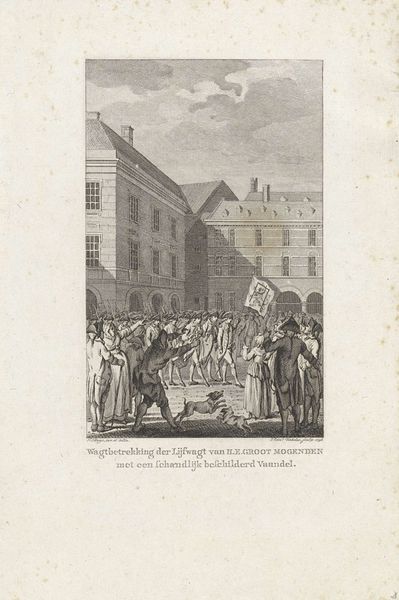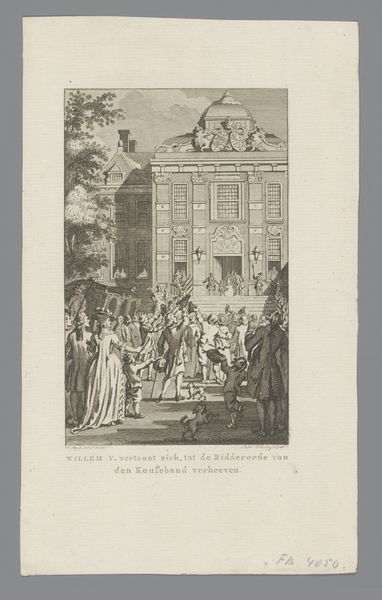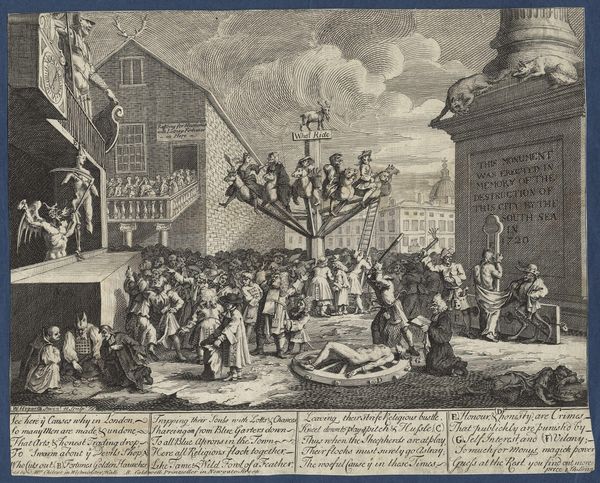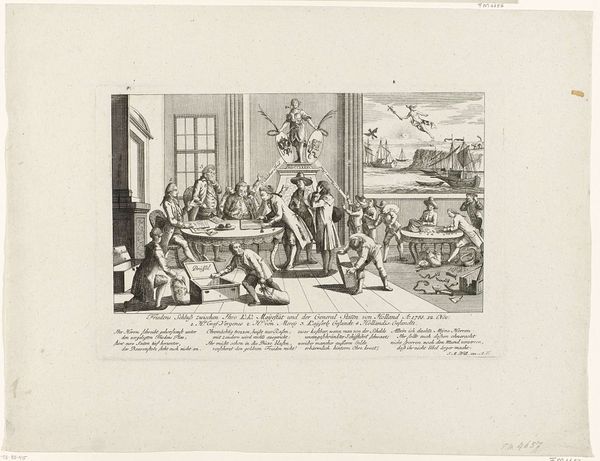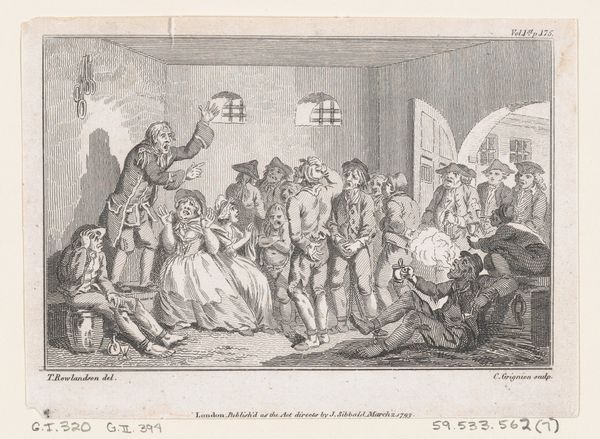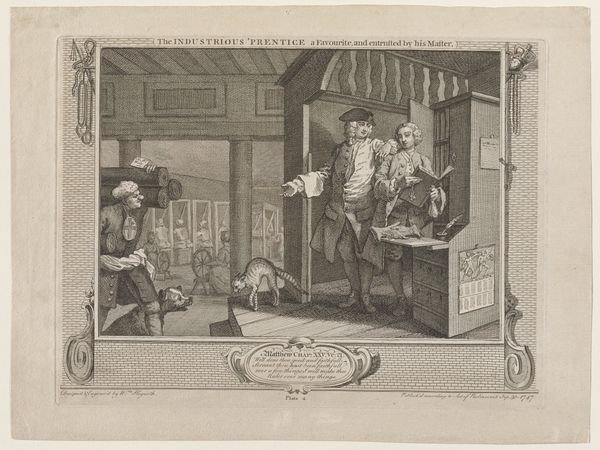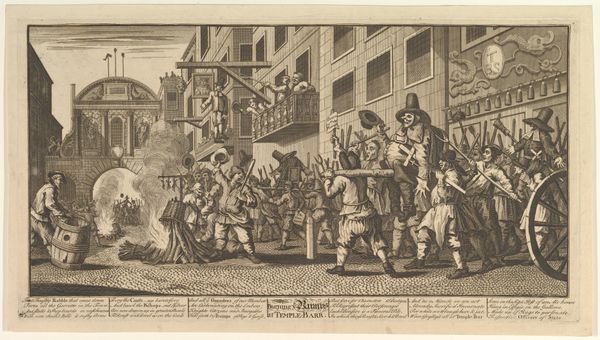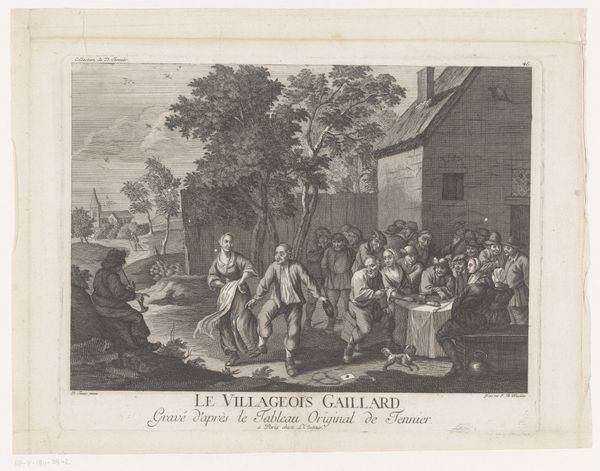
Dimensions: plate: 6 1/4 x 7 1/2 in. (15.8 x 19 cm) sheet: 7 3/16 x 7 7/8 in. (18.2 x 20 cm)
Copyright: Public Domain
Curator: This engraving, "The Colossus of the North; or the Striding Boreas," dates back to 1774. It's currently held at the Metropolitan Museum of Art. What are your initial thoughts? Editor: The scale is striking. This oversized figure, rendered in such fine lines, feels both powerful and absurd. I’m immediately drawn to the level of detail and curious about the engraving process. What paper and inks were available then, and how did they contribute to this effect? Curator: Considering its context, this piece is a strong political commentary on the British government's policies regarding America. The "Colossus" symbolizes Britain, stepping over those who are struggling under its weight. The allegorical imagery clearly points to power and its abuse during that period. Editor: Yes, looking at it, one wonders about the labour involved in creating such intricate lines and the social structures of print production at that time. The material qualities of the paper itself become important; was it locally sourced? Did its production have ramifications for social justice, such as fair wages, or the exploitation of workers? Curator: Precisely! Notice the figures drowning in what is described as a "stream of corruption," clutching at anything for survival while this figure strides above. There's a biting critique of social inequity in those desperate faces. The print would have reached a wide audience, sparking conversation and possibly inciting further resentment towards British policies. Editor: And those documents he's holding and stepping on, “Lottery Tickets,” “Places,” and “Pensions”-- all forms of material and social control made visible! Who made these objects visible to the world? It suggests both artistic labor and some form of subversive resistance, right? It uses its means of distribution as its core message, challenging high and low cultures in doing so. Curator: Definitely subversive. And consider the artist's role during such political upheaval. Were they actively resisting? What dangers did they face in creating and distributing such a potent image? How was this received at the time, particularly amongst different classes and political groups? Editor: For me, examining the artistic process helps to ground the larger socio-political narratives you mentioned. Both approaches combined gives the print further meaning beyond just surface analysis, revealing layers of consumption, production and activism that shaped its era. Curator: I agree. Analyzing "The Colossus of the North" requires both a historical lens to understand its message and an exploration of the materials that give it form and allowed it to participate within broader systems of culture and class during the height of political agitation.
Comments
No comments
Be the first to comment and join the conversation on the ultimate creative platform.
